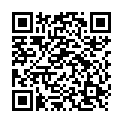|
|
|
| Module code: E303 |
|
3V+1U (4 hours per week) |
|
5 |
| Semester: 3 |
| Mandatory course: yes |
Language of instruction:
German |
Assessment:
Written examination
[updated 10.03.2010]
|
E303. Biomedical Engineering, Bachelor, ASPO 01.10.2011
, semester 3, mandatory course, course inactive since 28.11.2013
E303 Electrical Engineering, Bachelor, ASPO 01.10.2005
, semester 3, mandatory course
|
60 class hours (= 45 clock hours) over a 15-week period.
The total student study time is 150 hours (equivalent to 5 ECTS credits).
There are therefore 105 hours available for class preparation and follow-up work and exam preparation.
|
Recommended prerequisites (modules):
E104 Fundamentals of Electrical Engineering I
E203 Fundamentals of Electrical Engineering II
[updated 10.03.2010]
|
Recommended as prerequisite for:
E402 Electronics II
E501 Microprocessors I
E505 Electrical Drive Systems
E521 Integration-Compliant Circuit Engineering I
E614 Telecommunications Electronics
[updated 12.03.2010]
|
Module coordinator:
Prof. Dr. Volker Schmitt |
Lecturer:
Prof. Dr. Volker Schmitt
[updated 10.03.2010]
|
Learning outcomes:
Having acquired a basic understanding of the properties of electronic components (in this case: diodes and bipolar junction transistors), students will be able to use a variety of computational and graphical methods to analyse and dimension electronic circuits. With the skills learned, students will be able to understand the function of specific circuits and, conversely, will be able to construct circuits to implement simple functions subject to specified constraints.
[updated 10.03.2010]
|
Module content:
- Basic terminology and overview
- Diodes: diode characteristics, operating point, amplitude limiter, rectifier,
peak current, ripple, smoothing, voltage doubler, sampling gate, voltage
stabilization, envelope modulator, piecewise linear diode model, small-signal
equivalent circuit diagram, thermal characteristics, depletion layer and
diffusion capacity, breakdown mechanisms
- Special diodes: PIN diode, Zener diode, backward diode, tunnel diode,
varactor (tuning) diode, Schottky diode, photodiode, solar cell, light-
emitting diode
- Brief introduction into circuit simulation using PSPICE
- Bipolar junction transistors (BJTs): structure, characteristics, Ebers-Moll
equations, operating ranges, static and dynamic properties, thermal
characteristics, boundary data, operating point setting circuits,
stabilization
- Parametric representations: H- and Y-parameter models, performance
characteristics, H-parameters and the characteristic curve family,
Y-parameters and basic circuits involving BJTs
- Small-signal amplifiers built with BJTs: Giacoletto model, characteristic
cut-off frequencies, low-frequency and high-frequency behaviour
- Power amplifiers built with BJTs: class A, B and AB amplifiers, efficiency
[updated 10.03.2010]
|
Teaching methods/Media:
Overhead transparencies, master copies and problem sheets
[updated 10.03.2010]
|
Recommended or required reading:
M. J. Cooke: Halbleiter-Bauelemente; Hanser Verlag, ISBN 3-446-16316-6
M. Reisch: Elektronische Bauelemente; Springer Verlag, ISBN 3-540-60991-1
A. Möschwitzer: Grundlagen der Halbleiter- & Mikroelektronik, Band 1: Elektronische Halbleiterbauelemente; Hanser Verlag
Bystron/Borgmeyer: Grundlagen der technischen Elektronik; Hanser Verlag
R. Müller: Grundlagen der Halbleiter-Elektronik; Springer Verlag
J. Millman, A. Grabel: Microelectronics; Mc Graw Hill Verlag, ISBN 0-07-100596-X
Tietze, Schenk: Halbleiterschaltungstechnik; Springer Verlag
Giacoletto, Landee: Electronics Designer´s Handbook; Mc Graw Hill Verlag
Günther Koß, Wolfgang Reinhold: Lehr- und Übungsbuch Elektronik; Fachbuchverlag Leipzig, ISBN 3-446-18714-6
[updated 10.03.2010]
|


